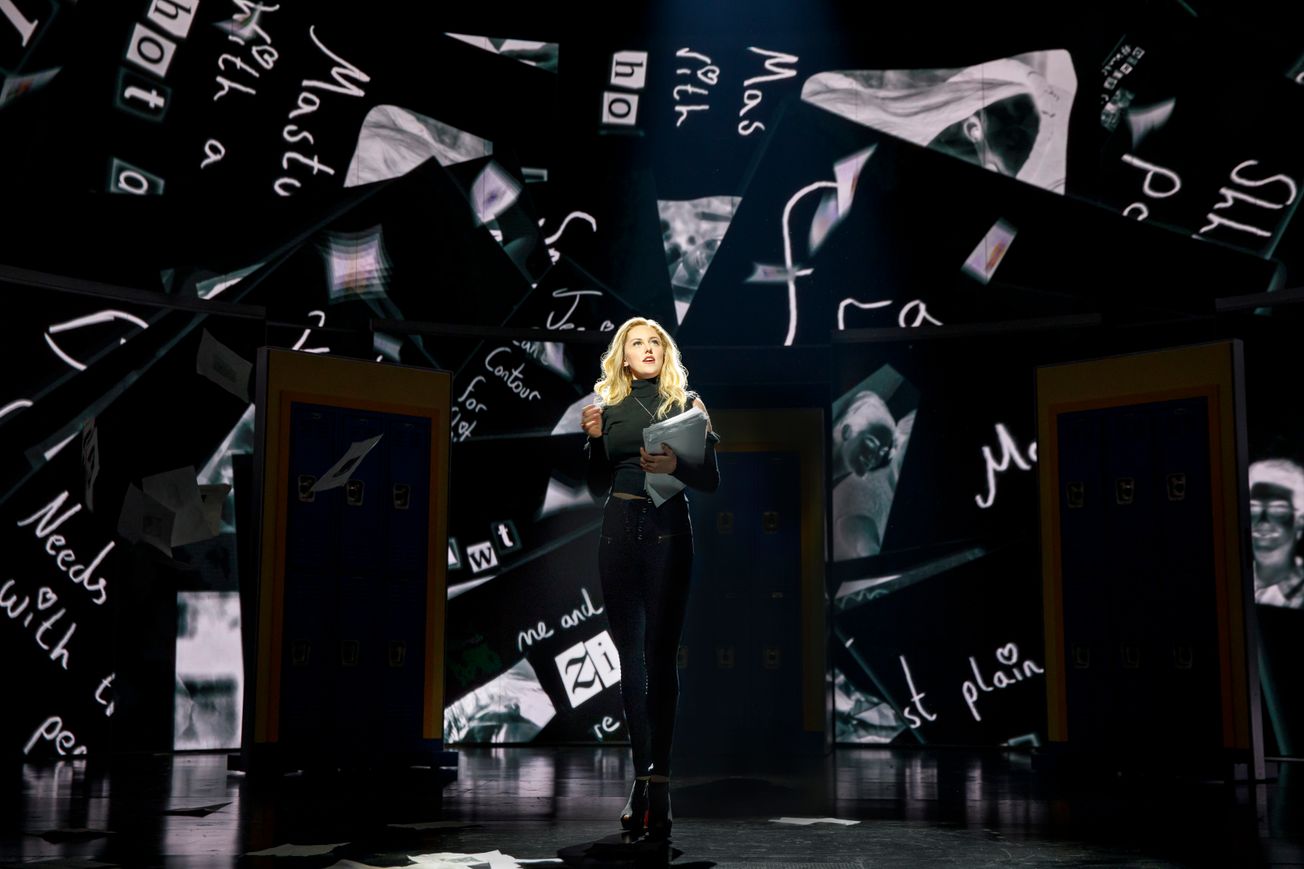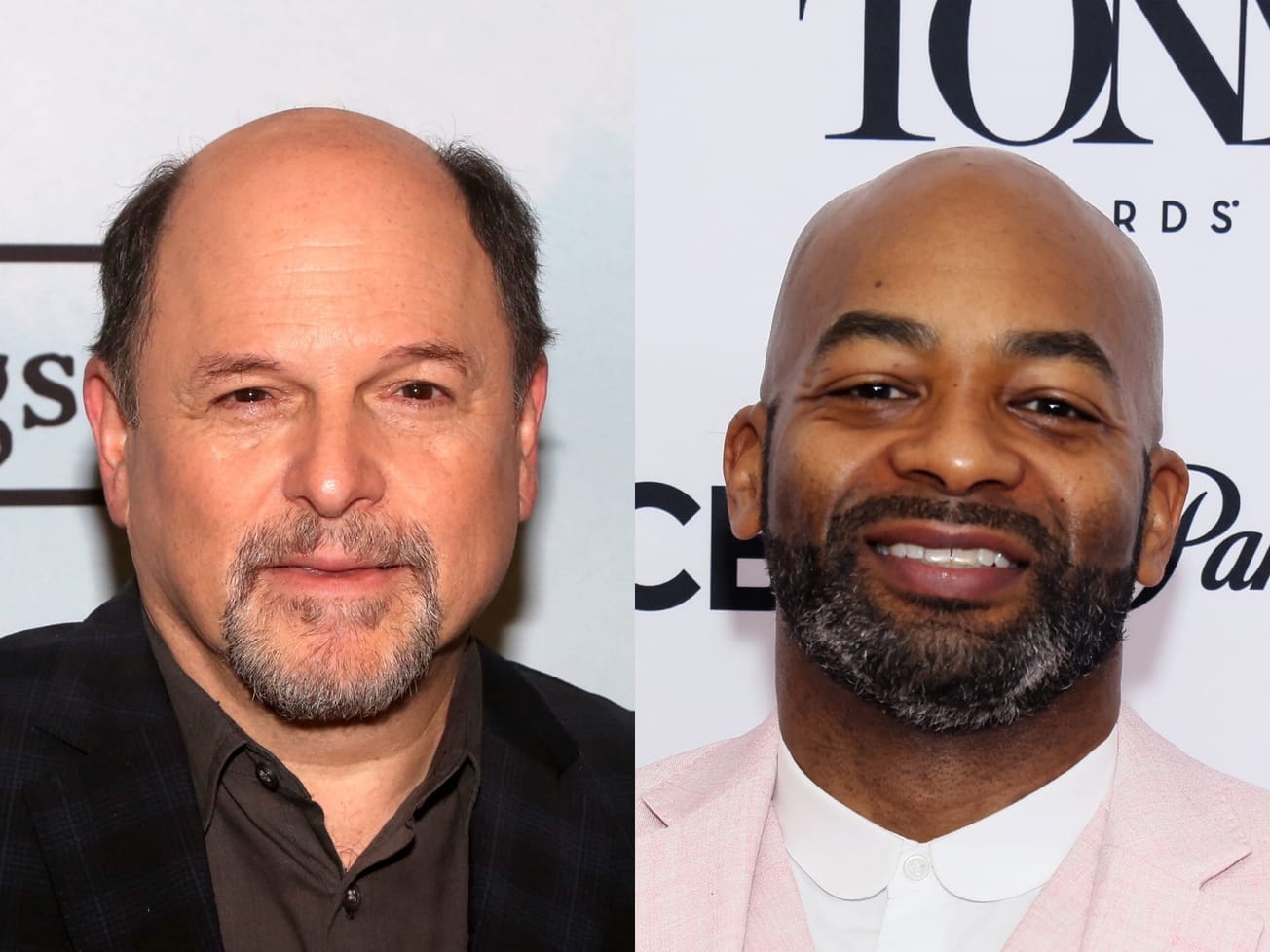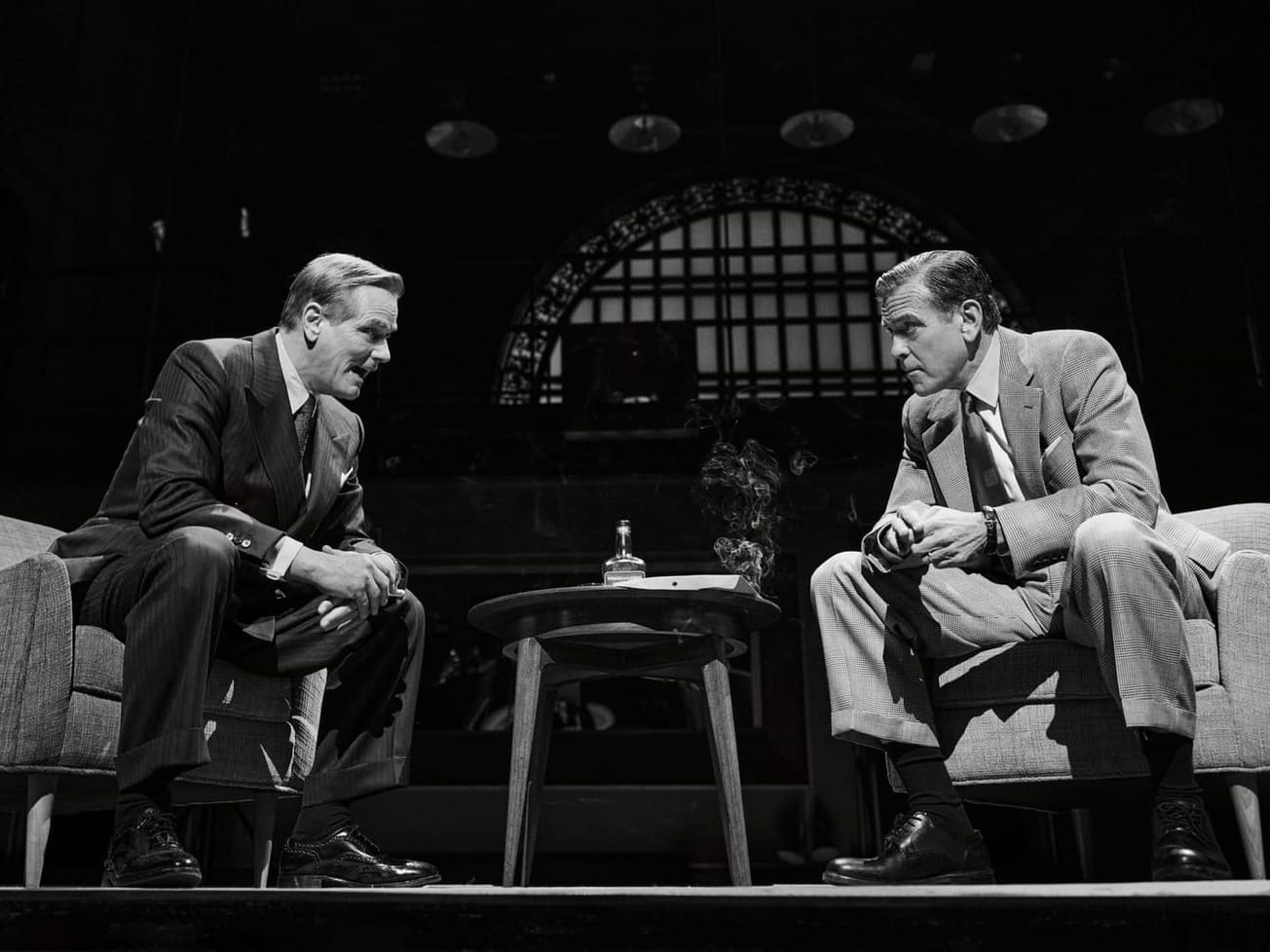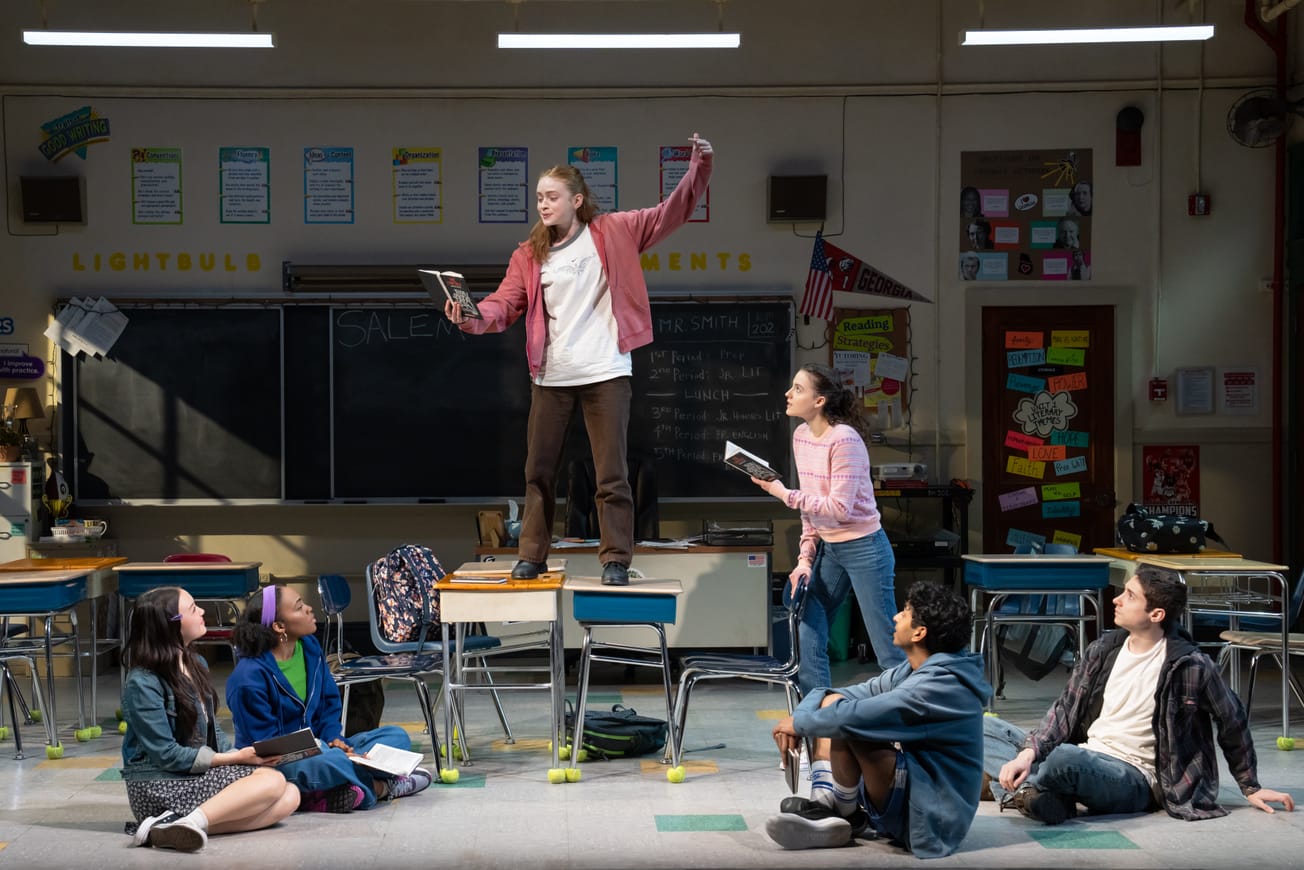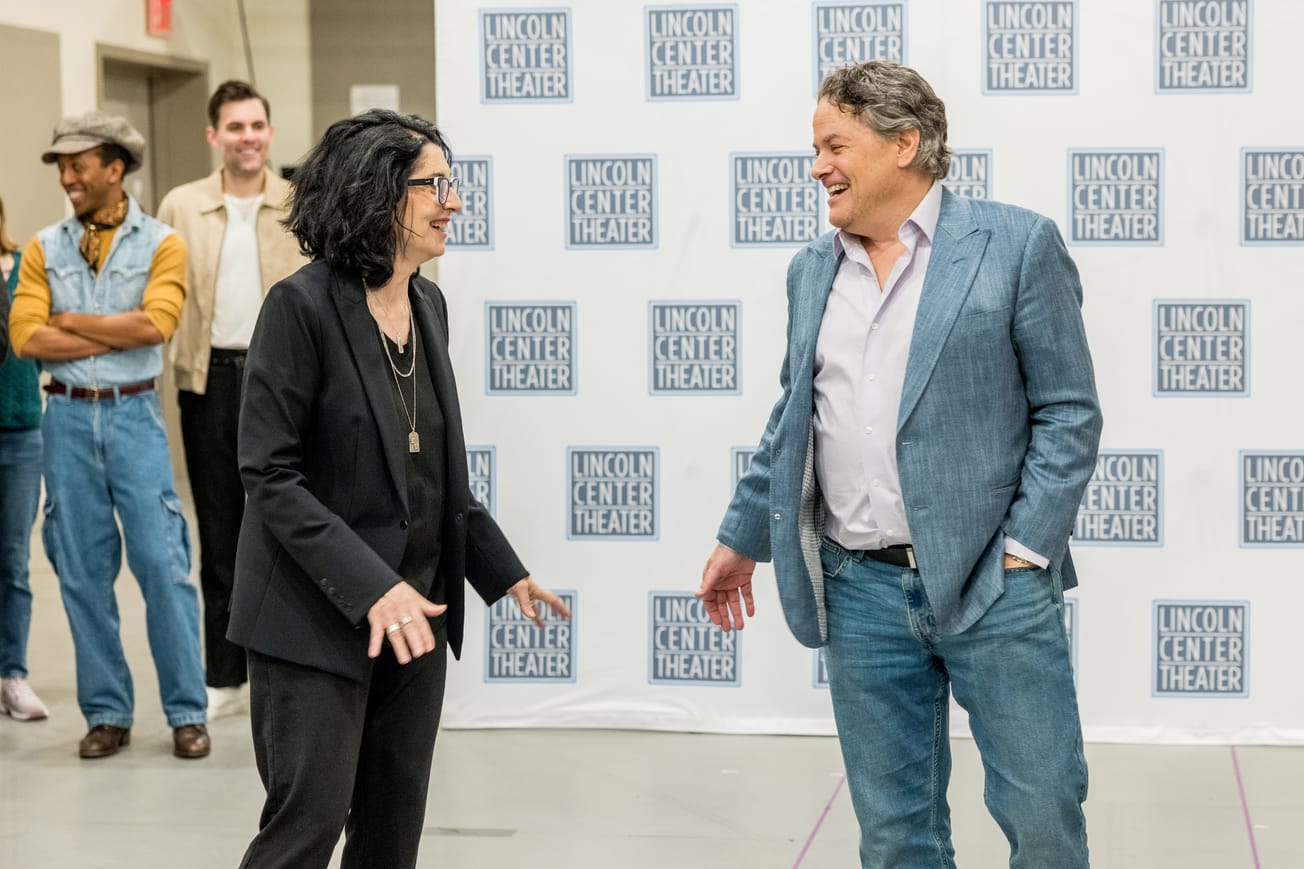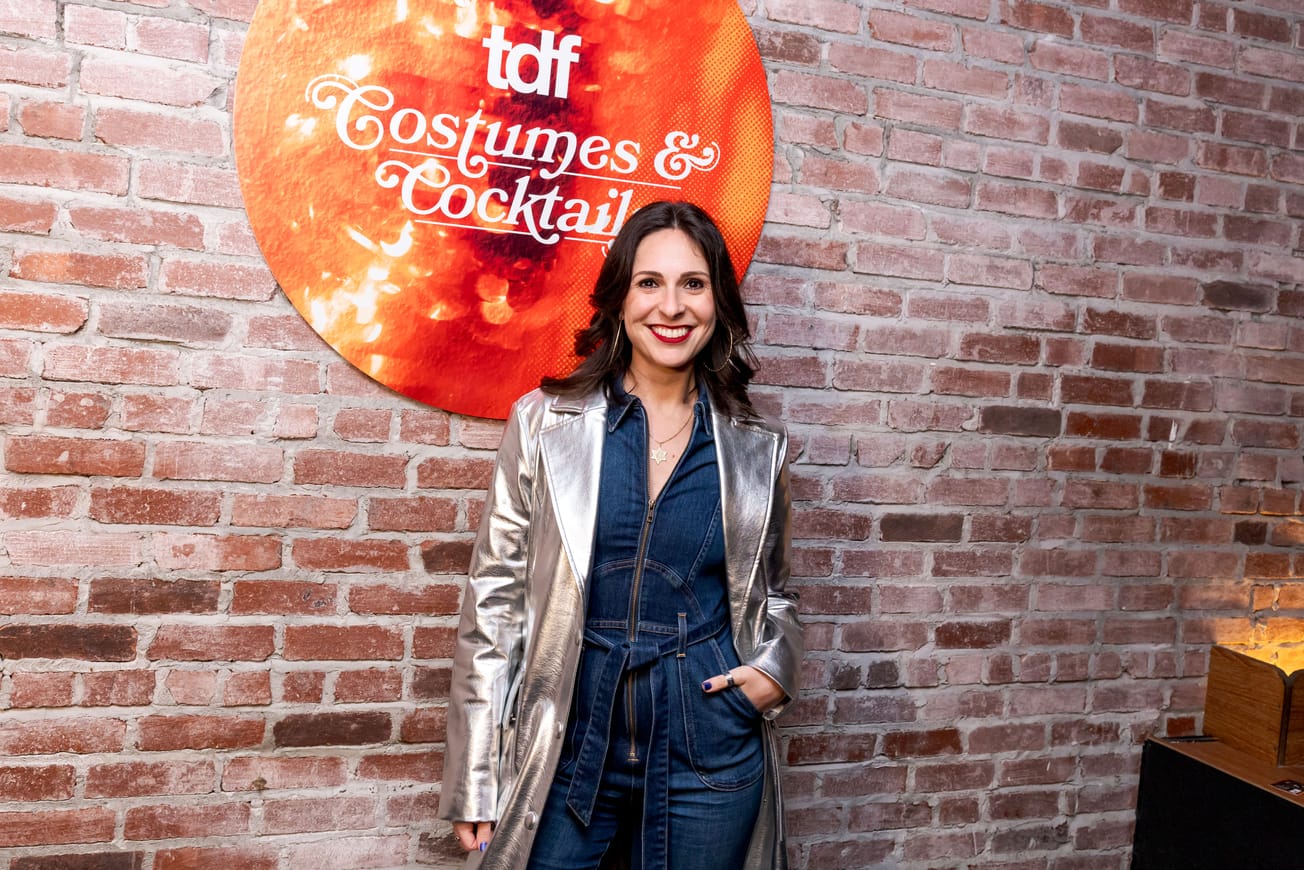In “Mean Girls,” a large white wall can instantly transform from an African savanna to the hallway of a suburban American high school and then to a visualization of the world of social media.
These scene changes come thanks to Finn Ross and Adam Young, who created the LED videos featured on the musical’s set, which is nominated for a Tony Award. Beyond “Mean Girls,” video and projection design is appearing more frequently on the stage, both to keep up with modern playwrights and with new technology.
“I think there is an evolution happening,” Ross said. “Gradually more and more and more it’s accepted and understood.”
Working alongside set designer Scott Pask, Ross and Young used 650 LED tiles — with each functioning as its own kind of television that links with the others to project one image — to create the design for “Mean Girls.” This season, Ross also worked on “Frozen” which uses a mixture of LED and projection, and with Ash Woodward on “Harry Potter and the Cursed Child,” which uses projection design. (Projection design also uses video, but is designated differently because of the way the video is delivered to the stage.)
This is the third Tony Award nomination for Ross, who was previously recognized for his work on “The Curious Incident of the Dog in the Nighttime” and “American Psycho.” His most recent project was “Jagged Little Pill,” which recently opened at American Repertory Theater.
All of these shows have a “psychological element” to them, which Ross finds he can enhance through the use of video and projection. For example, in “Mean Girls,” the LED backdrop brings pages of the “Burn Book” to life as Regina George embarks on her quest for revenge against Cady Heron.
With “Frozen,” video and projection are layered to imbue the ice Elsa creates with different emotions, Ross said. (On “Harry Potter,” Ross is keeping the secrets and just said that it “has video projection.”)
But beyond psychology, the technology helps match the pace of newer playwrights.
Director Casey Nicholaw said he turned to video design on “Mean Girls” because of Tina Fey’s writing style, which features quick cuts, short scenes and fast-paced dialogue. The video screens allowed him flexibility and the ability to quickly jump between scenes, but also deepened the story, he said.
“I also was excited by using the content also for comedy rather than just the transitions,” Nicholaw wrote in an email to Broadway News. “It was like directing two shows at once — the one on the screens and the one on the stage.”
When Nicholaw chose this approach about four years ago, he said he thought the use of this technology would be “novel.” But since then, he said it feels like most musicals he’s seen have used projection design.
Projection and video designers of three productions — “Mean Girls,” “1984” and “Summer” — were also deemed eligible by the Tony Awards nomination committee in the Best Scenic Design categories.
The Outer Critics Circle awards and the Drama Desk Awards both include separate categories for projection design, which also encompasses LED video. At the Drama Desk Awards, that category first appeared in 2008 and then became a recurring feature beginning in 2013.
That decision was made as the nominators saw an increasing use of projection and video as part of set design, said David Barbour, committee chair of the Drama Desk Awards and editor-in-chief of Lighting&Sound America. This season is no exception, Barbour said, with video and projection design in frequent use on Broadway, off-Broadway and off-off-Broadway, the three areas the awards encompass.
Both Barbour and Ross noted that the cost of using LED video has gone down, as the technology is no longer as novel, which may contribute to its increasing use.
But overall, Barbour sees the frequency of use on stage reflecting the use of video in everyday life.
“We live in a video society,” Barbour said. “It’s inevitable that it would find its way into theater.”


















































